
Horologist
in over 11 years
More from Horologist
Collet chuck comparison with good news for Shopsmith owners.
Collets or collet chucks are an excellent way to hold small pieces and with good tools the work can be removed from the collet and reinstalled with little loss of concentricity.
The split wire chuck was developed by US watch manufactures in the mid-19th century and is quite accurate but requires the work piece to fit the collet very closely. If the object to be turned is of a larger diameter or more than a few thousands smaller than the collet ID then the collet can be damaged and accuracy suffers.
So as result, you need a bunch of them. This set is in increments of 1/64" (0.016”) in an ideal world with an unlimited tool budget I would also have the metric set with increments of 0.5 mm. The collets for my watchmaker’s lathes are in increments of 0.1mm or 0.2 mm.
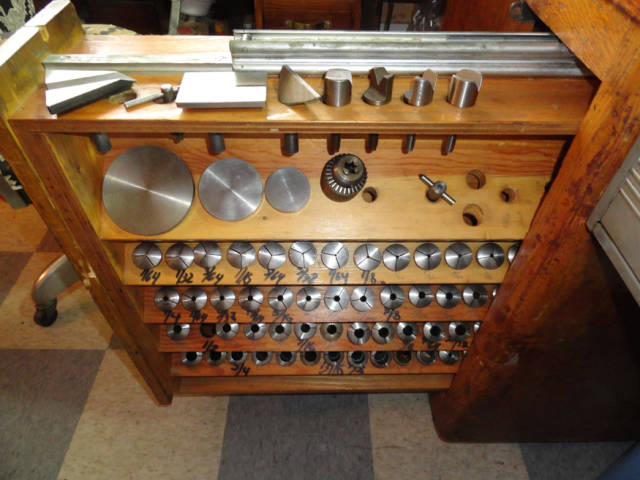
ER collets are a more modern design and have greater ability to handle differences between collet diameter and the diameter of the work piece. Once again the work piece should be able to slide freely into the collet but they have a greater clamping range. One manufacturer lists a clamping range of 0.039” this much mismatch on a split wire chuck would never be acceptable.
I’m not sure if one type is inherently more accurate than the other. However, I have seen that as a rule collet sets sold to metal workers have less runout than those sold to woodworkers. As a woodworker do you really need all that accuracy? I guess this depends on what you are making and if you need to remove the piece from the chuck during the turning process.
For a small but silly project, the world’s smallest wooden box:
< http://lumberjocks.com/projects/50720>
The error in the chuck would have made it impossible to successfully remove and replace the box into the chuck while working on this one.
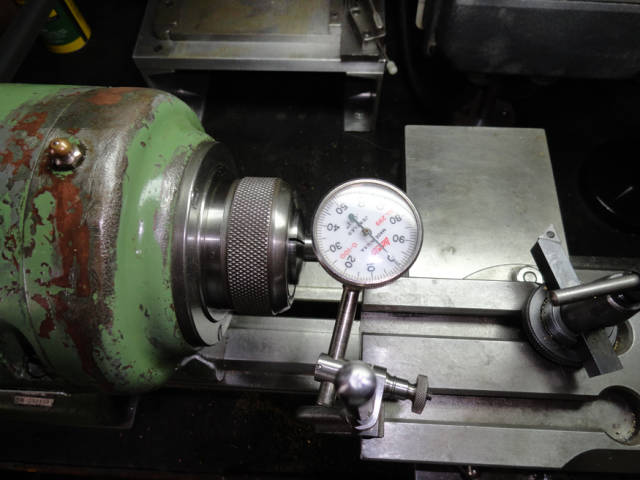
The three sets I tested are all made in China and for the most part are of surprisingly good quality for the cost.
As a control I placed a piece of ½ “ drill rod in my recently purchased Schaublin 102, the TIR was considerably smaller than 0.001”, beyond the resolution of a 0.001” indicator.
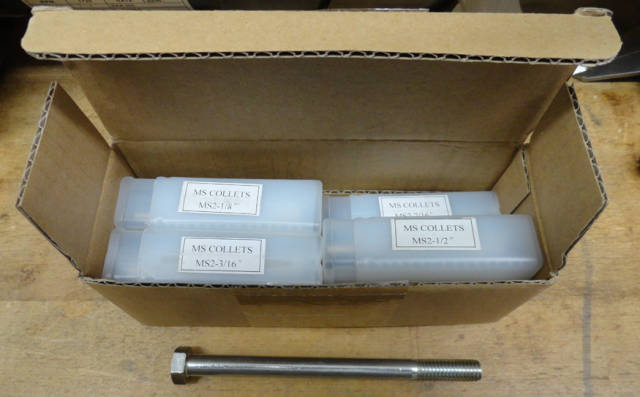
First is a set of collets from Little Machine Shop with a #2 Morse taper. These were made for mini mills but will work in any tool with the correct taper. You do need a drawbar, a bolt of the correct length is a quick and easy solution.
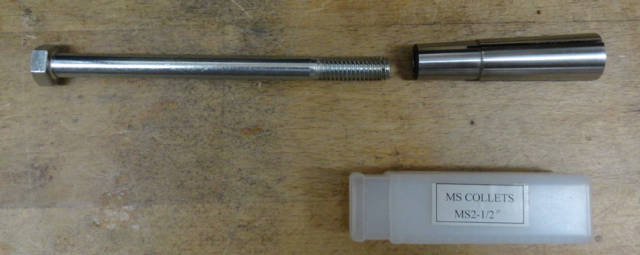
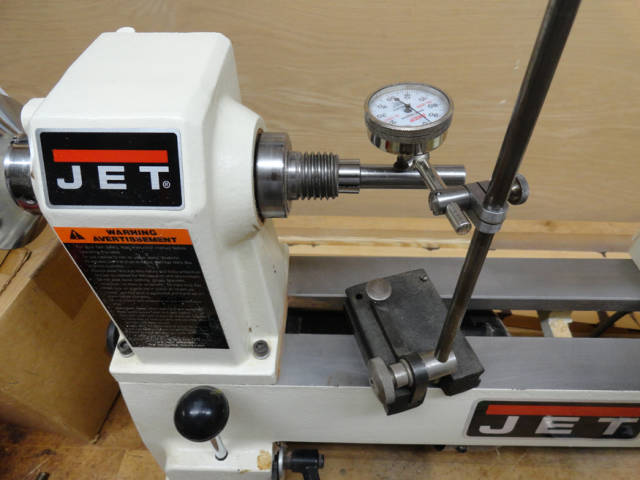
Collets of this design require the work piece to fit very closely, the diameter can be slightly smaller than the collet size and no larger, or the collet can be damaged and accuracy suffers.
TIR = 0.001”
Advantages:
Best in accuracy
Disadvantages:
Small thread size means a hollow draw bar is of little benefit.
Diameter of work piece must fit very closely.
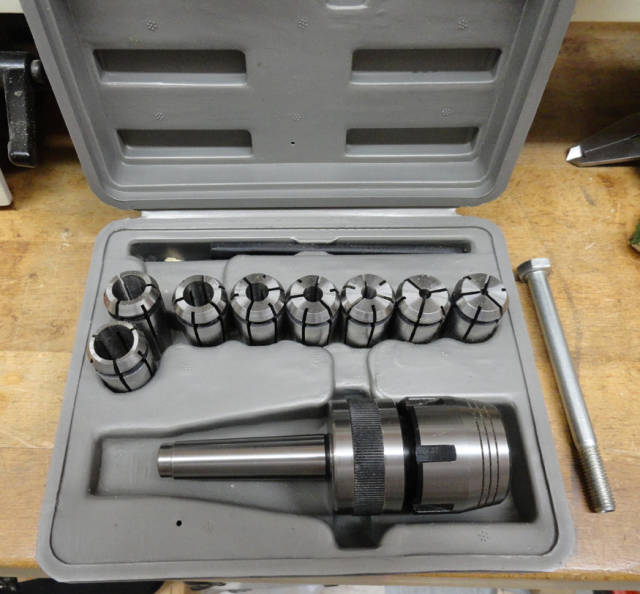
This set from Woodcraft uses a proprietary collet of a more modern design, similar to an ER collet. At least I have never been able to identify this one. Alas, it had some problems and needed a bit of work to make it functional. See http://lumberjocks.com/horologist/blog/33774 for the modifications required:
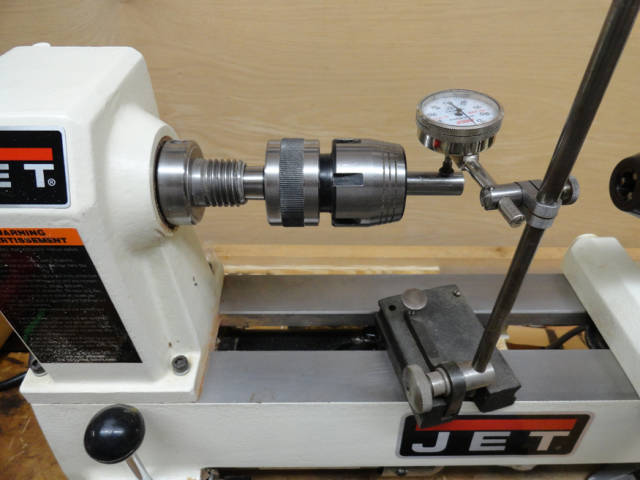
TIR = 0.010”
Advantages:
ER type collet is more forgiving of differences in diameter between collet and work piece so fewer collets are required.
Larger thread diameter in taper means a hollow drawbar is more useful.
Disadvantages:
Least accurate of three
Required modification to make the tool useful.
Collets are nonstandard so getting replacements or expanding the set is unlikely.
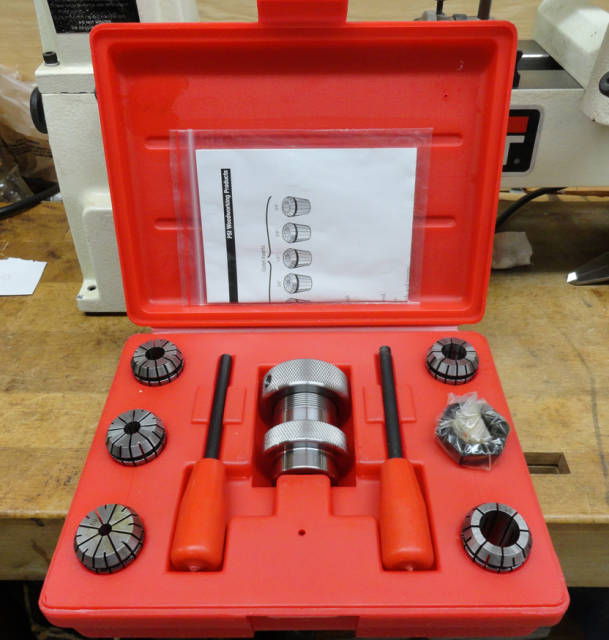
PSI Collet Chuck, this set uses an ER32 collet and screws onto the threads on the lathe spindle.
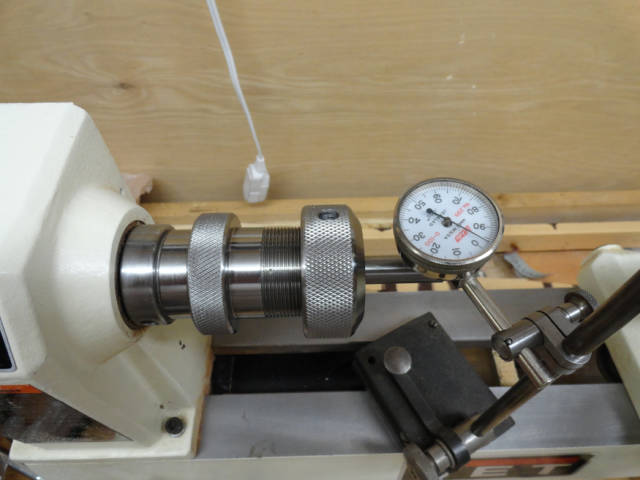
TIR = 0.003”
Advantages:
Standard collet so replacements or extra sizes are readily available.
ER collet is more forgiving of differences in diameter between collet and work piece so fewer collets are required.
Hollow chuck gives largest bore diameter so it is possible to have a larger diameter work piece passing through the headstock. A word of caution, unsupported lengths extending through the headstock can cause terrible injury.
Disadvantage
Like chisels, many ER collets while labeled in fractions of an inch are the nearest metric equivalent. While the collets in this set all seem fine the ½ “ collet is a bit tighter that I would like. Sets of ER32 collets are widely available but you should check with the seller to ensure you are getting the sizes you want.
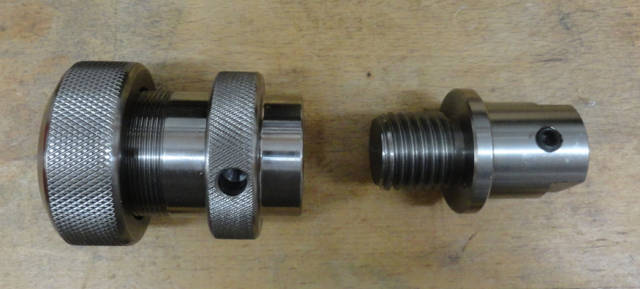
Shopsmith owners, with the 5/8” to 1” x 8 tpi adapter this is the only type of collet chuck I have found that will work with your machine.
TIR in this configuration was 0.005”.
Troy in Melrose Florida








